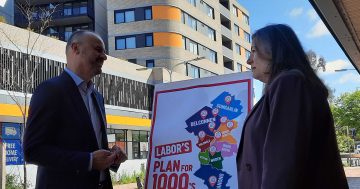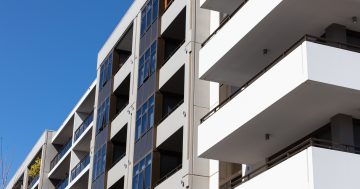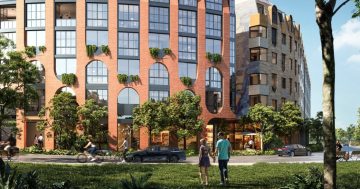
Live-in owners are snapping up apartments, as well as townhouses and detached houses. Photo: File.
Canberra’s housing market has roared back to life after the pandemic pause. Money is cheap and property, at least in Canberra, is a safe bet.
But it’s not so much investors leading the charge but first home buyers, upgraders and downsizers.
Apartments in big developments are being snapped up by live-in buyers, who made up more than 90 per cent of purchasers in one Woden tower alone.
Off-the-plan projects, including townhouses, are often sold out well before completion.
Record prices are being paid, mainly for in-demand detached houses in most suburbs, and new price floors are being built as existing owners use their equity and/or cheap loans to move to better digs or downsize to quality developments, and first home buyers borrow big to get a toehold in the market before the next big surge swamps them.
Then there are those being left behind, who are overwhelmed by the magnitude of the mortgage required or simply aren’t in the race to begin with.
In Canberra, that means also paying some of the highest rents in the country.
And while it may be good news for owner-occupiers that the dreaded investor has vacated the field, the consequence may be fewer rental properties and steep rents.
One agent says the government’s rates and land tax policies are to blame, freezing investors out of the market, but that tax regime is unlikely to change, especially in light of Labor’s election victory.
No wonder then that the government is exploring the Build to Rent model as part of its housing strategy to provide more affordable shelter to the city’s lower-paid workers.
Build to Rent, where a building is owned by one entity and rented out to tenants, is popular in the US and UK where homeownership is not as prevalent as in Australia.
Developments may not necessarily be limited to the less well-off but include a wide range of amenities for tenants wanting the comfort and security of a home without the mortgage.
The payoff for the owner, which may be an institutional investor or superannuation fund, is a stable return.
The government wants to know if the model is feasible for its needs and what policy or tax incentives may be required for an investor to be interested.
While home purchase in the ACT is considered affordable in the context of the national capital’s high incomes and low jobless rate, a sizeable chunk of the workforce is struggling in Canberra’s constricted private rental market but too ”well off” for public or even social housing.
The government, with new impetus from its Green ministers, has a program to boost its housing stock but with a new frenzy of home buying leaving people behind in a tightening rental market, the ACT needs new up-to-date, energy efficient properties that can offer them secure tenure at reasonable rents.
Without the Commonwealth coming to the party, it cannot fill this housing gap on its own.
Build to Rent may offer the best hope to boost supply, stop rents climbing and offer secure homes.





















